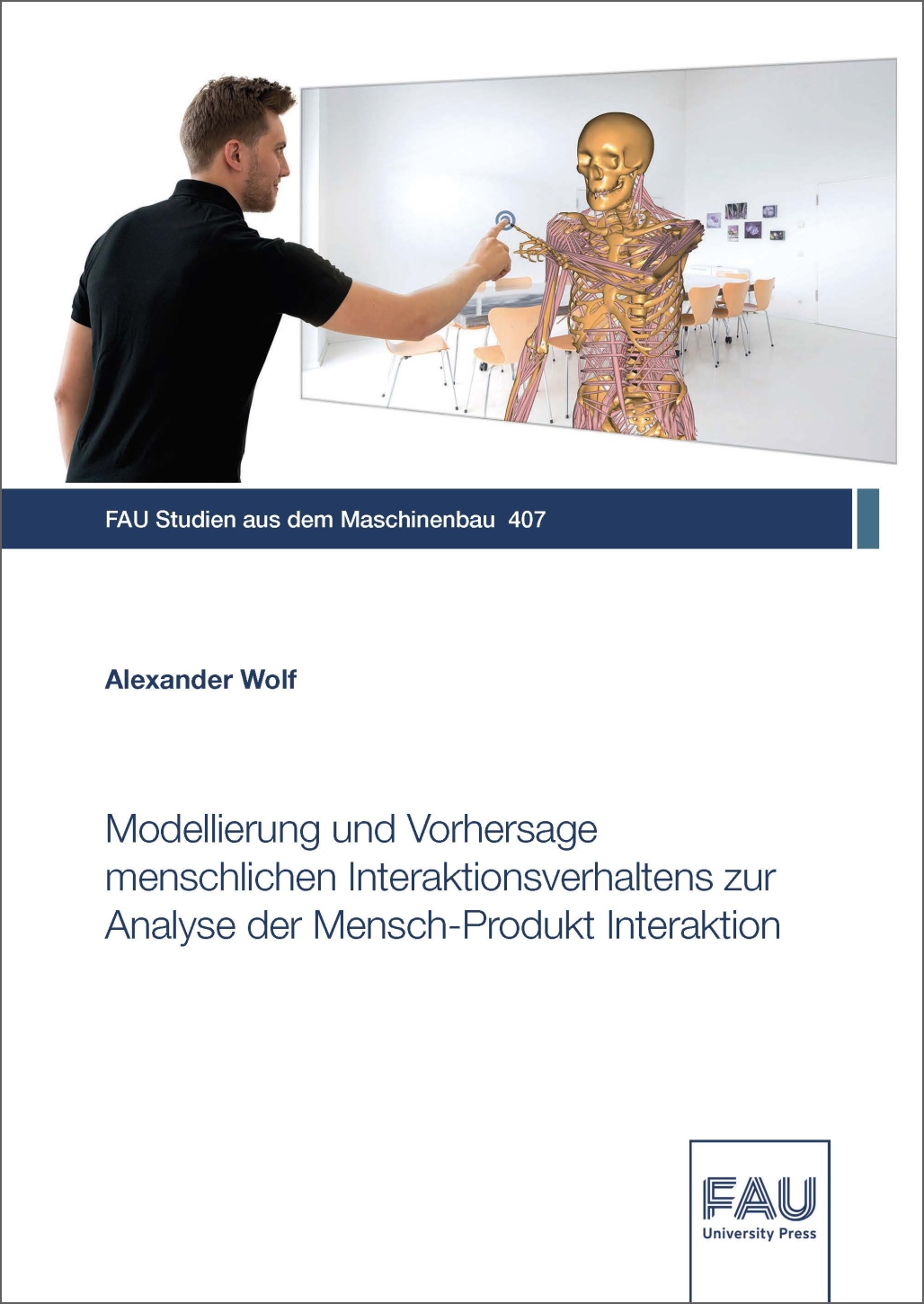Description
Digital human models enable virtual and predictive analysis of physical human-machine interactions on digital product models. This allows for an early and proactive consideration of human-centred requirements such as product ergonomics and usability in the design process. A prerequisite of predictive analyses using digital human models however, is the prediction of human interaction behaviour. Existing predictive interaction models predominantly focus on occupational processes or the analysis of specific use cases. A versatile applicable predictive interaction model is not sufficiently researched in the context of product design according to the current state of the art.
The aim of this thesis is to contribute to a closing of the described research gap. For this purpose, a predictive interaction model, consisting of a method for versatile and accessible task modelling and a method for human interaction behaviour prediction, is researched. The method development is supported by a systematic literature review and the classification of interaction possibilities by means of a taxonomy of elementary affordances. The implementation of the methods, in the terms of a CAD-integrated modelling environment and a body posture prediction and analysis using musculoskeletal human models, enables the evaluation of the developed methods. Two evaluation studies demonstrate the correct technical functionality of the methods and show indications of applicability and usefulness of the predictive interaction model in the context of product design.


Reviews
There are no reviews yet.